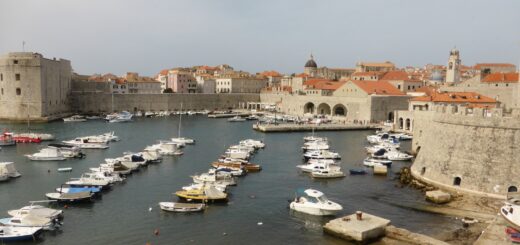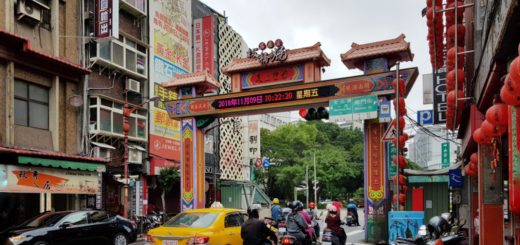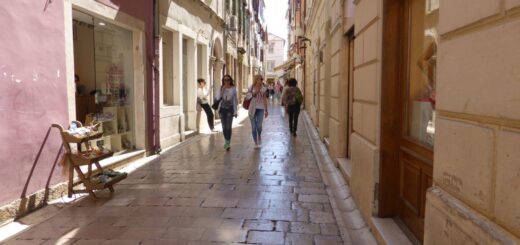Settling into Seoul
Friday 30th October 2015
View initial photos of Seoul
Well here I am in the amazing city of Seoul, the second largest metropolitan in the world with more than 25.6 million people (half of all the residents in South Korea). Having only arrived yesterday I haven’t had a chance yet to explore much of this huge city or to take many photos, but I will make up for that over the next three days before setting off on my bike journey on Monday.
My bicycle and I managed to arrive in good condition yesterday morning after an 8 hour flight from Sydney (that was nearly two hours late taking off), a 7.5 hour stopover at Kuala Lumpur airport, a 6.5 hour flight to Incheon airport, then a 75 minute limousine bus ride to the Kobos hotel in central Seoul. The No. 6030 bus (which cost only 15,000 Korean Won) was a good introduction to some of the sights of the city and took me to within 130 m of my hotel, which is just as well when you are carrying a 7 Kg cabin bag as well as a 20 Kg cardboard bike box 140 cm x 80 cm x 22cm.
Air Asia is certainly a no frills, budget airline but I guess you get what you pay for – my return fare to South Korea cost only $860. There is no entertainment screen at all, not that this was a concern because I always prefer to use my laptop and listen to music on my outdated 64 Gb iPod Touch. Also there was no blanket, head pillow, or food or water either unless you were prepared to pay extra for it. I had no regrets about forking out 18 Malaysia Ringgits (about A$6) for a delicious Malaysian Rendang chicken curry with sambal, coconut rice and fried anchovies. With the help of a couple of sleeping pills I was able to sleep soundly for most of the second leg, without being disturbed by a food and drinks trolley.
After travelling with an airline that provides no free extras, I arrived at the Kobos hotel that includes absolutely everything for a reasonable 75,375 KRW (about A$89) per night! When I say everything I mean… insecticide, hairspray, hair gel, face lotion, face milk, skin milk for men, skin lotion for men, foam cleanser, toothbrush, toothpaste, shampoo, conditioner, body cleanser, spa foam, two boxes of tissues, two coffee sachets, two teabags, matches, bottle opener, ash-tray, two dressing gowns, two pairs of slippers, two plastic scuffs for bathroom use, a hair dryer, a big bath with spa jets and hand held shower, a separate shower with spa jets and stool, an electric jug, hot and cold water urn, a desktop computer, separate wi-fi modem on every floor, a flat screen TV, a combined CD/tape player with radio, an electric extension cord on a reel, a rechargeable torchlight mounted on the wall, a bar fridge with two complimentary bottles of water, air-conditioning, and a 3-seater couch. There is even a bed, unlike a couple of the hanoks (homestays) where I will be sleeping on the floor.
My initial impressions of Seoul are favourable and here are some initial observations:
- Seoul is a clean, modern, well-developed, city.
- People are very friendly, although very little English is spoken (just as well I have learned the Hanguel alphabet).
- Smart phones are even more prolific than in Australia. I even saw a toddler at the airport clicking impressively fast on a device (must have been sending an SMS to a mate).
- Wi-fi is everywhere, outside every convenience store, at bus stops, in trains etc.
- Many shops are open 24 hours a day.
- Convenience stores abound, several to a block, mainly 7-11 … I hope they pay their staff better than in Australia!
- At the big supermarkets you have to buy in bulk. It is impossible to buy just a couple of pieces of fruit or a small packet of nuts etc.
- The Seoul subway trains only allow bicycles on weekends and only on some lines.
- Food such as kimchi, stir fries, rice is provided as a breakfast option.
- It can be very cold at this time of year even though it is still mid-autumn. Apparently the temperature has dropped about ten degrees since last week, with today’s forecast being 5 degrees minimum to 10 degrees maximum.
I haven’t seen any monks, but last night there was a candle-lit mass being performed in the rain at one of the street corners near the hotel. I was attracted by the beautiful harmonious voices ringing out in the night air and wondered what was going on.
After unboxing and re-assembling my bike yesterday I took it for a spin along the fabulous smooth, wide bike path that runs beside the Hangang River. I went into panic mode when I found out that none of the routes I had created for my Garmin work here in Korea! Google is pressuring South Korea to ease up on regulations that make it impossible for the company to offer navigational directions through Google Maps. While South Koreans are very tech-savvy and known as early adopters of most technologies, old laws restricting the use of mapping data have prevented Google from offering services that most of the world takes for granted. The government permits only the use of low-resolution maps, and all data must be processed on servers inside the country’s borders. Recently, the government of President Park Geun-hye moved to begin relaxing some of those rules, providing English-language map data that would allow Google to begin offering directions. But the company says the maps do not have a high enough resolution to be able to provide the full Google Maps service, and has asked to be able to process the map data on its own servers.
Without even a map with me I managed to get well and truly lost trying to find my way back to the hotel. My saviour was a very kind young Korean man who looked up the Kobos Hotel using Naver maps on his smart phone, then walked me about 200 m right to the door. South Koreans are such delightful people!
GPS navigation is critical to the success of my ride, so as soon as I got back to the hotel I googled for a solution to the map problem. I found several others have experienced similar problems, but I couldn’t find any satisfactory solution. Then I tried downloading from the Netherlands and uploading onto my device a different type of open source map (“openstreetmap generic routable” instead of “openfietsmapslite routable bicycle”). Although this map is more intended for cars, at least it shows up on my Garmin and all my bike routes seem to layer across it satisfactorily. I think I have found a solution, but I need to do plenty of testing in the next couple of days before I set off on my journey on Monday.
I am off now to check out the Yongsan Electronics Market and some of the other interesting sights of Seoul. What a pity I don’t have any room left in my pannier bags to carry any purchases!




Settling in well Kevin – don’t get too comfortable though as you have a few k’s cycling ahead of you!
I could easily live in this big, beautiful city Pete! There is one decent climb on Day 4 (Chungju to Jeomchondong) but apart from that it is fairly flat. On the day that I am riding 92 Km (Daegu to Bugok-myeon) I just happen to be staying in a spa hotel in a spa village, which will soothe my aching bones.
It has been a delight to read your Seoul travel blog on your first day. I was transfixed to everywhere you ventured.
Thank you for this insight Kev. It has given us much tip for our visir next year to SK.
We look forward to your follow-up travel updates and tips.
Glad you are enjoying B & P. I have put aside a map of South Korea and will send you some tips.
You can see know why I said to you it was a pleasure to train Air Korean pilots. Mind you be careful as they will often tell you they understand, when they dont. Enjoy your ride
Cheers
Ken
Thanks Ken and good to hear from you. Enjoying Seoul and its people very much, but it is cold in the mornings.
Take care out there Kev. Every place has some kind and helpful people to help with directions, but nasty folk lerk everywhere too….then you have always been a good judge of character. Ride with the wind my friend. You are an inspiration Kev.
As you once told me Robynne, “you only get one crack at life, so make the most of it”. I will be on the lookout for the baddies, but I feel fairly safe here. A ship is safe in the harbour, but ships weren’t built to stay in the harbour … John A. Shedd.